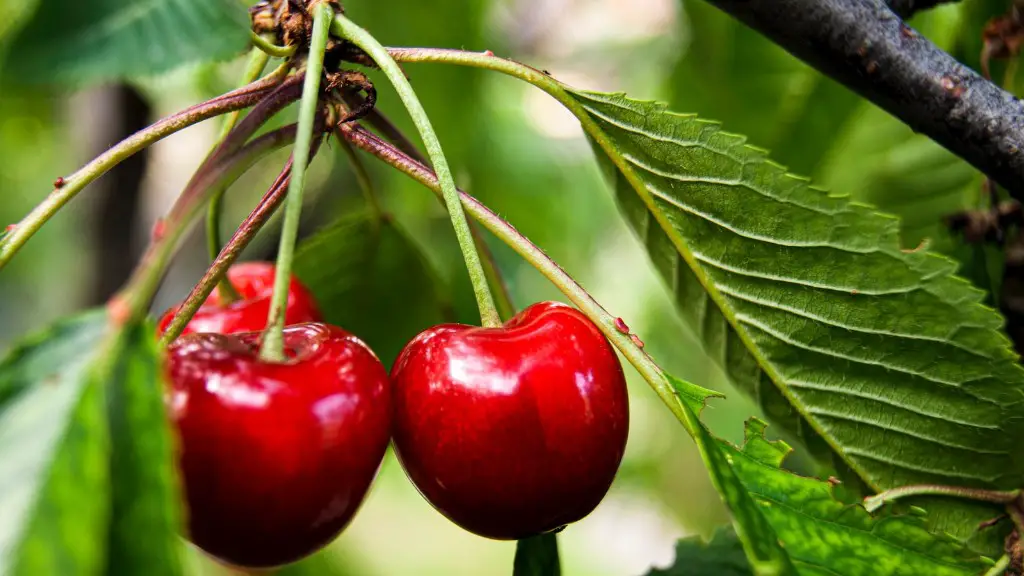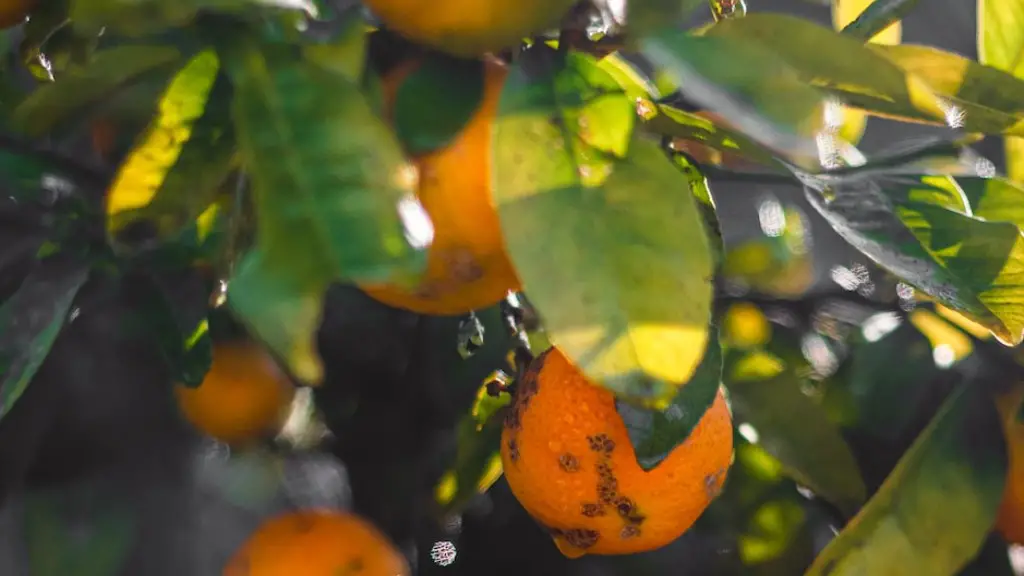How to Grow a Cherry Tree from a Pit
Growing a cherry tree from a pit is a rewarding endeavour that gives anyone an opportunity to enjoy homegrown cherries and become a part of the tree’s life cycle. It is a patient and labour-intensive process that often takes multiple years for the tree to bear harvestable fruit but the effort is worth it. Following the right steps can ensure a successful cherry tree growth and abundant crop of cherries.
Cherries are planted in late winter or early spring, usually after the final frost of the season to avoid the risk of frost damage. If the pit was refrigerated before planting, it should be allowed to thaw before being planted. The best planting time points may vary depending on the variety of the cherry, so checking with a local agricultural representative could also be an helpful option to find specific information on the tree.
Once the planting season begins in your region, the pit should be placed in a hole that is 2-3 inches deep and 6 inches wide. The hole should be filled with the same soil that was used before or a similar soil mix, and the covered with about 1 inch of soil. After two weeks, the pit should be watered thoroughly once a week unless rain does the job. The soil should be moist when touched but not soggy in order for the tree to grow in the best conditions and without the risk of disease.
To help with the growth and to prevent the damager from pests and animals, the new sapling should be surrounded by small fencing, shelter and protection should also be provided during harsh weather periods. Pruning should also be taken into account and keep any competing vegetation away. These steps will help the tree reach its full potential and grow in the best conditions possible.
Most cherry tree varieties are self-fertile, meaning that their flowers contain both male and female parts so the cherry tree would be able to pollinate with its own flowers in order to produce the fruit. Though, this could be improved by adding bees and other pollinators, who will provide extra pollination to the tree and ensure a more abundant harvest.
Growing cherry trees can carry risks in the sense that they can be affected and even destroyed by a number of pests and diseases, so assessing and monitoring the tree regularly is a must to detect any signs of damage and treat it as quickly as possible. Taking preventive measures such as providing the right environment and location for the cherry tree can help mitigate the attack of these possible threats so the tree can reach its full potential and provide its owners with sweet and juicy cherries.
Location and climate
Finding the best location for cherry tree growth is vital, seeing that cherries need full sunlight and need to be located in areas with well-drained soil. Generally, most cherry varieties are best suited for temperate climates, seeing that too cold temperatures can damage and even kill the tree during colder parts of the winter, while too hot climates can cause fruits to ripen too quickly and destroy the cherries from the inside.
In addition, the location of the tree should be considered according to the particular characteristics of the chosen variety, seeing that some of them need a certain amount of chilling hours to achieve optimal fruit production. Checking with local experts to find what is the best value for the chosen variety is recommended since it can drastically change the tree’s future productivity.
Overall, finding the right location and climate combination is essential in order to successfully grow a cherry tree from a pit. Taking the time to understand the needs of the specific variety, consulting with local experts and assessing potential risks can go a long way in helping the young cherry tree to a fruitful future.
Soil pH and nutrients
Cherries need a well-drained soil in order to reach their full potential, otherwise the tree’s growth can become stunted or experience an early death. Checking the soil for its pH value and nutrient levels is a necessary step that has become much easier nowadays with the development of testing kits that can be purchased from most gardening shops.
The soil should have a pH level of 5-7 to be suitable for Cherry Trees, seeing that anything lower or higher can damage or even kill the tree. In addition, the soil should be supplemented with necessary elements depending on the soil type and the needs of the specific variety. Potassium is one essential nutrient that should be taken into account, seeing that it helps the fruit to harden properly. If deficits are detected in the soil, they can be fixed with the help of fertilisers.
Due to the laborious process, enriching the soil beforehand to get the right pH level and provide the necessary nutrients can come of great help and ensure the healthy growth of the cherry tree right off the bat. Adding mulch to the soil can also be of help and it has the added benefit of helping maintain moisture levels, a key factor to consider in order to keep the tree healthy.
Water levels and stress
Water needs should be evaluated, as too much or too little water can be harmful for the tree’s growth. For proper cherry tree watering, the soil should be constantly moist and irrigated depending on the local climate. During hot periods the tree should be provided with extra water, seeing that the risk of the soil drying up is very high.
In addition, another factor to consider is maintaining a proper balance between giving the tree enough water and not over water it, as this can kill it through root rot and other plant diseases that thrive in soggy soils. Evaluating the water needs every season is necessary to ensure the right balance, otherwise the cherry tree can be damaged or outcompeted by other vegetation.
Stress can be fatal for the cherry tree, seeing that it can be damaged and destroyed if not taken care of properly. To avoid the risk of tree stress, providing protection and shelter against wind, extreme temperatures and drought should be taken into consideration. Additionally, taking preventive measures against diseases and pests is a must to ensure a healthy and stress-free growth.
Fertiliser and controlling pests
Fertiliser can give a boost to the cherry tree’s growth and if used correctly it can increase the productivity of the tree drastically. Additionally, pests and disease can play a role on reducing the quality of the fruit or even kill the tree, so controlling them with approved preventive measures should be taken into consideration.
Ensuring a pest-free environment can be done by taking preventive measures, such as providing a fence or a shelter in order to keep animals away and applying approved pesticides. Applying a fungicide after it rains can also be of help and reduce the risk of disease. In addition, using an appropriate fertilizer during the planting season can help with the tree’s nutrition and provide protection against early stages of disease.
Harvesting and transporting
Once it has flowered and the fruits have ripened, it is time to start harvesting. It is important to be mindful of the fact that fruits must be picked before they become overly ripe in order to avoid decay. Evaluating the ripeness of the cherries is done by tasting them, or if the tree is high enough, colourizing the fruits.
Once the cherries have been harvested it is important to select those that have been damaged and remove any debris that is attached to them. After the cleaning process, the fruits should be stored in a cool and dry place. Transporting the cherries should also be done with care and extra protective materials should be taken into account, such as straw and felt.
Additionally, storing the cherries in a refrigerator can also be of great help and will ensure that they will be kept fresh and crisp for a longer time. Transporting them in smaller batches and replenishing them from time to time is also a valid choice.
Drying and storing cherries
Another valid method for cherries is drying them and storing them for future use. Drying the cherries is a laborious process and involves two steps, the blanching process by which cherries are first boiled or steamed in hot water and then allow to be partially dried, and the actual drying process which involves heating the cherries and leaving them to be thoroughly dried.
Once the cherries are dried and cooled, they should be stored in an airtight container, preferably a plastic one and should be kept in a cool, dark and dry place. Checking the container once a month to make sure that it is still airtight and that the cherries are still dry is also recommended.
Conclusion
In conclusion, growing a cherry tree from a pit can produce multiple benefits, both emotionally and in terms of food production. Taking the right steps and following the right procedures can go a long way in helping the tree reach its full potential, as well as keeping it healthy, pest and disease-free.
Providing the right environment, nutrients and water to the tree is vital to its development and understanding the needs of the particular variety can drastically change the tree’s future productivity. Keeping pests and diseases away and using approved methods for harvesting, transporting and storing the cherries can help the owner to enjoy homegrown and delicious cherries for a long time.





